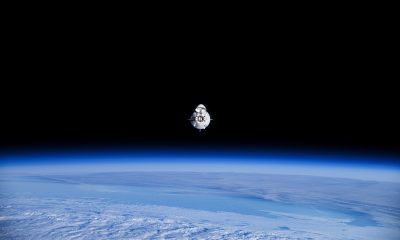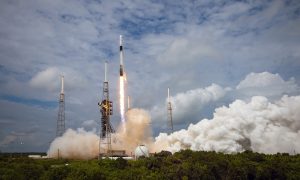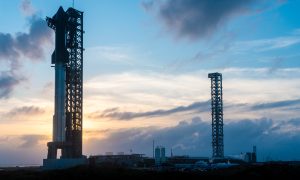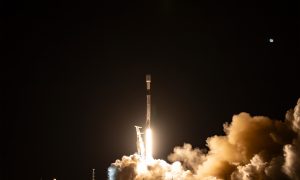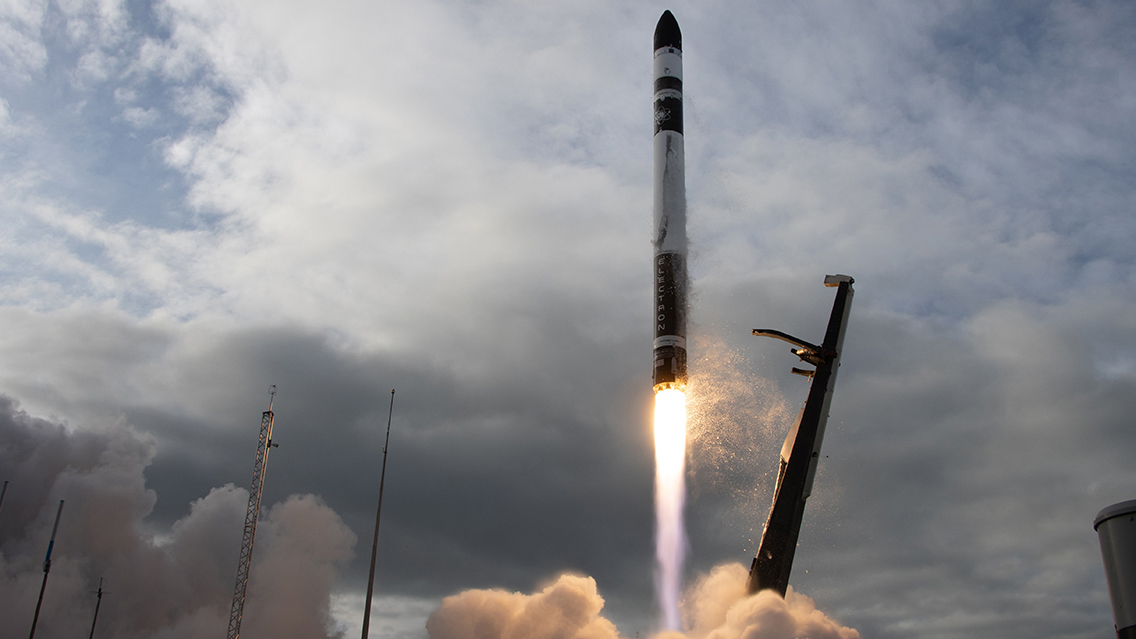

News
Rocket Lab to resume launches following in-flight anomaly investigation
Less than a month after the complete loss of customer payload due to an in-flight anomaly, Rocket Lab has announced that it is ready to return its small-class Electron rocket to flight. Company CEO, Peter Beck, during a media briefing Friday (July 31) said that the Electron second-stage “re-entered the atmosphere and burned up” resulting in a failed July 4 launch of the Electron and complete loss the customer payload of seven small satellites. Beck went on to state that through a collaborative investigation with the Federal Aviation Administration Rocket Lab was “able to quickly reconstruct what happened and the AIB board (Accident Investigation Board) was able to confidently narrow down the issue to a single electrical connection.”
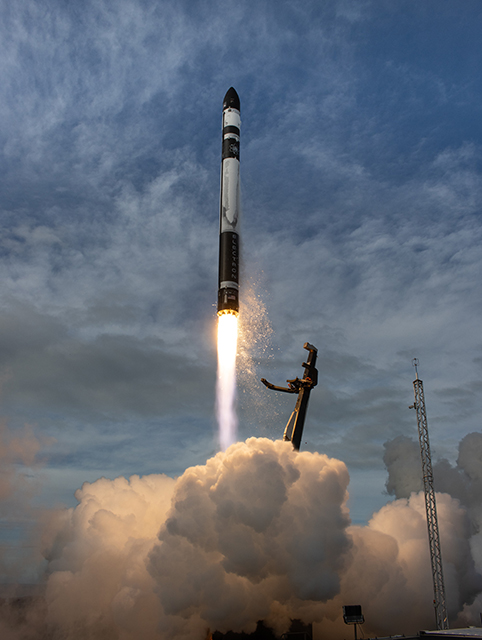
The thirteenth flight of the Electron carried seven small satellites, all Earth-imaging inspiring the “Pics Or It Didn’t Happen” mission name. The rocket initially experienced a flawless launch from the company’s Launch Complex-1A on New Zealand’s Mahia Penninsula and everything seemed like it was going to plan until the video feed cut out unexpectedly shortly after the nominal ignition of the second-stage which was intended to carry the payloads to orbit.
The launch was completely event free during the first-stage ascent, stage separation, second stage ignition, and payload fairing jettison, then trouble occurred. Beck stated that the electrical connection that went bad during the second-stage of the flight was “incredibly unusual because it was able to evade all of the pre-flight acceptance testing.” Beck went on to explain that “while all of the testing showed no issues, after a period of time one of the joints had high resistance and that high resistance led to heating. That heating then led to thermal expansion of one of the components. That thermal expansion and heating enabled some of the potting components – that are around that joint to keep it secure from vibration – to flow.”
Once the potting compound used to secure electrical connections was able to heat up and essentially melt – or began to flow – the electrical connection become unsecured and led to the interruption in electrical current throughout the second-stage. Beck stated that “when the video stops (in the webcast) is exactly the point (of failure).” Although the video cut out, Rocket Lab ground stations continued to receive telemetry data of the flight’s progress due to the amount of redundancy with the systems aboard Electron “telemetry is the only way you can reconstruct this stuff so we have a very high priority of those (data) channels” Beck said.
With the immense amount of data that was received during the flight and throughout the second-stage shutdown Rocket Lab was able to quickly determine the cause of the error and perform tests to determine exactly what occurred during the failed flight. “The vehicle as it flies every flight has just a huge amount of instrumentation. That coupled with a graceful shutdown coupled with full telemetry stream throughout the whole anomaly, we were really able to quickly reconstruct what happened” Beck said.
The vast amount of data and the ability to sufficiently replicate the incident now means that Rocket Lab has a plan of action in place to mitigate any failures – of this nature – on future missions. “We can actually mitigate (the anomaly) very easily through a slight change in production processes, but more importantly we can screen for it in our current vehicles and stock through more in-depth testing procedures.”
To that end, the Rocket Lab Electron is set to return to flight in August, an impeccable turn around time following an anomaly investigation.”I’m very proud of the way the team has been able to identify this issue and rectify it so quickly” Beck said. He gave high praise to the entire Rocket Lab team for relentlessly working toward determining, not only the cause of the anomaly but working toward a solution for a quick return to flight. “Literally ten minutes after we saw some anomalous behavior during the flight, the team already started to work it and they haven’t stopped. They’ve been relentless” Beck said.
The customer payload that will fly aboard the return to flight and fourteenth mission of Electron launch is expected to be announced very soon. Rocket Lab did state that following a successful launch from the LC-1A complex in New Zealand, the following mission would be the first to take place from the brand new Launch Complex 2 located at the Mid-Atlantic Regional Spaceport at NASA Wallops in Virginia. Although an American private company, Rocket Lab predominately launches from New Zealand. The upcoming mission will be the first Electron flight to occur from American soil.
Beck closed the media briefing by stating that Rocket Lab looks forward to returning to operational status and launching Electrons every month, if not bi-weekly. He expressed that Rocket Lab is looking to the future and hopes to achieve a full recovery effort of the first stage booster via a helicopter and a specially designed grappling hook with the seventeenth flight of Electron. He also hinted that “there’ll be a couple of other little surprises as well, as we execute some other programs that have been cooking up in the background.”
Elon Musk
Tesla investors will be shocked by Jim Cramer’s latest assessment
Jim Cramer is now speaking positively about Tesla, especially in terms of its Robotaxi performance and its perception as a company.

Tesla investors will be shocked by analyst Jim Cramer’s latest assessment of the company.
When it comes to Tesla analysts, many of them are consistent. The bulls usually stay the bulls, and the bears usually stay the bears. The notable analysts on each side are Dan Ives and Adam Jonas for the bulls, and Gordon Johnson for the bears.
Jim Cramer is one analyst who does not necessarily fit this mold. Cramer, who hosts CNBC’s Mad Money, has switched his opinion on Tesla stock (NASDAQ: TSLA) many times.
He has been bullish, like he was when he said the stock was a “sleeping giant” two years ago, and he has been bearish, like he was when he said there was “nothing magnificent” about the company just a few months ago.
Now, he is back to being a bull.
Cramer’s comments were related to two key points: how NVIDIA CEO Jensen Huang describes Tesla after working closely with the Company through their transactions, and how it is not a car company, as well as the recent launch of the Robotaxi fleet.
Jensen Huang’s Tesla Narrative
Cramer says that the narrative on quarterly and annual deliveries is overblown, and those who continue to worry about Tesla’s performance on that metric are misled.
“It’s not a car company,” he said.
He went on to say that people like Huang speak highly of Tesla, and that should be enough to deter any true skepticism:
“I believe what Musk says cause Musk is working with Jensen and Jensen’s telling me what’s happening on the other side is pretty amazing.”
Tesla self-driving development gets huge compliment from NVIDIA CEO
Robotaxi Launch
Many media outlets are being extremely negative regarding the early rollout of Tesla’s Robotaxi platform in Austin, Texas.
There have been a handful of small issues, but nothing significant. Cramer says that humans make mistakes in vehicles too, yet, when Tesla’s test phase of the Robotaxi does it, it’s front page news and needs to be magnified.
He said:
“Look, I mean, drivers make mistakes all the time. Why should we hold Tesla to a standard where there can be no mistakes?”
It’s refreshing to hear Cramer speak logically about the Robotaxi fleet, as Tesla has taken every measure to ensure there are no mishaps. There are safety monitors in the passenger seat, and the area of travel is limited, confined to a small number of people.
Tesla is still improving and hopes to remove teleoperators and safety monitors slowly, as CEO Elon Musk said more freedom could be granted within one or two months.
News
Tesla launches ultra-fast V4 Superchargers in China for the first time
Tesla has V4 Superchargers rolling out in China for the first time.

Tesla already has nearly 12,000 Supercharger piles across mainland China. However, the company just initiated the rollout of the ultra-fast V4 Superchargers in China for the first time, bringing its quick-charging piles to the country for the first time since their launch last year.
The first batch of V4 Superchargers is now officially up and running in China, the company announced in a post on Chinese social media outlet Weibo today.
The company said in the post:
“The first batch of Tesla V4 Superchargers are online. Covering more service areas, high-speed charging is more convenient, and six-layer powerful protection such as rain and waterproof makes charging very safe. Simultaneously open to non-Tesla vehicles, and other brands of vehicles can also be charged. There are more than 70,000 Tesla Superchargers worldwide. The charging network layout covers 100% of the provincial capitals and municipalities in mainland China. More V4 Superchargers will be put into use across the country. Optimize the charging experience and improve energy replenishment efficiency. Tesla will accompany you to the mountains, rivers, lakes, and seas with pure electricity!”
The first V4 Superchargers Tesla installed in China are available in four cities across the country: Shanghai, Zhejiang, Gansu, and Chongqing.

Credit: Tesla China
Tesla has over 70,000 Superchargers worldwide. It is the most expansive and robust EV charging network in the world. It’s the main reason why so many companies have chosen to adopt Tesla’s charging connector in North America and Europe.
In China, some EVs can use Tesla Superchargers as well.
The V4 Supercharger is capable of charging vehicles at speeds of up to 325kW for vehicles in North America. This equates to over 1,000 miles per hour of charging.
Elon Musk
Elon Musk hints at when Tesla could reduce Safety Monitors from Robotaxi
Tesla could be reducing Safety Monitors from Robotaxi within ‘a month or two,’ CEO Elon Musk says.

Elon Musk hinted at when Tesla could begin reducing Safety Monitors from its Robotaxis. Safety Monitors are Tesla employees who sit in the front passenger seat during the driverless rides, and are there to ensure safety for occupants during the earliest rides.
Tesla launched its Robotaxi fleet in Austin last Sunday, and after eight days, videos and reviews from those who have ridden in the driverless vehicles have shown that the suite is safe, accurate, and well coordinated. However, there have been a few hiccups, but nothing that has put anyone’s safety in danger.
A vast majority — close to all of the rides — at least according to those who have ridden in the Robotaxi, have been performed without any real need for human intervention. We reported on what was the first intervention last week, as a Safety Monitor had to step in and stop the vehicle in a strange interaction with a UPS truck.
Watch the first true Tesla Robotaxi intervention by safety monitor
The Tesla and UPS delivery truck were going for the same street parking space, and the Tesla began to turn into it. The UPS driver parallel parked into the spot, which was much smaller than his truck. It seemed to be more of an instance of human error instead of the Robotaxi making the wrong move. This is something that the driverless cars will have to deal with because humans are aggressive and sometimes make moves they should not.
The Safety Monitors have not been too active in the vehicles. After all, we’ve only seen that single instance of an intervention. There was also an issue with the sun, when the Tesla braked abnormally due to the glare, but this was an instance where the car handled the scenario and proceeded normally.
With the Robotaxi fleet operating impressively, some are wondering when Tesla will begin scaling back both the Safety Monitors and Teleoperators that it is using to ensure safety with these early rides.
CEO Elon Musk answered the inquiry by stating, “As soon as we feel it is safe to do so. Probably within a month or two.”
As soon as we feel it is safe to do so.
Probably within a month or two. We continue to improve the Tesla AI with each mile driven.
— Elon Musk (@elonmusk) June 30, 2025
Musk’s response seems to confirm that there will be fewer Teleoperators and Safety Monitors in the coming months, but there will still be some within the fleet to ensure safety. Eventually, that number will get to zero.
Reaching a point where Tesla’s Robotaxi is driverless will be another significant milestone for the company and its path to fully autonomous ride-sharing.
Eventually, Tesla will roll out these capabilities to consumer-owned vehicles, offering them a path to generate revenue as their car operates autonomously and completes rides.
For now, Tesla is focusing on perfecting the area of Austin where it is currently offering driverless rides for just $4.20 to a small group of people.
-

 News5 days ago
News5 days agoTesla Robotaxi’s biggest challenge seems to be this one thing
-

 News2 weeks ago
News2 weeks agoTesla confirms massive hardware change for autonomy improvement
-

 Elon Musk2 weeks ago
Elon Musk2 weeks agoElon Musk slams Bloomberg’s shocking xAI cash burn claims
-

 News2 weeks ago
News2 weeks agoTesla features used to flunk 16-year-old’s driver license test
-

 News2 weeks ago
News2 weeks agoTesla China roars back with highest vehicle registrations this Q2 so far
-

 News2 weeks ago
News2 weeks agoTexas lawmakers urge Tesla to delay Austin robotaxi launch to September
-

 News2 weeks ago
News2 weeks agoTesla dominates Cars.com’s Made in America Index with clean sweep
-

 News2 weeks ago
News2 weeks agoTesla’s Grok integration will be more realistic with this cool feature




